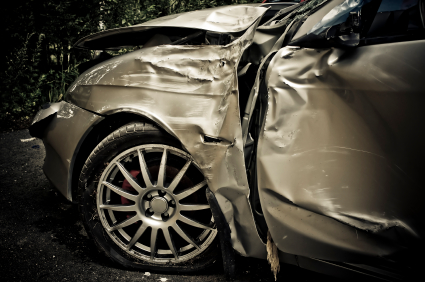Uninsured and Underinsured Coverage
What uninsured and underinsured coverage is, how it works, and why you need it – and what happens if you don’t have it.
In a perfect world, everyone who drives a vehicle would carry adequate auto insurance coverage. Of course, in a perfect world there wouldn’t be any car accidents either, so would there be a need for auto insurance in the first place?
Philosophical nitpicking aside, ours is most definitely not a perfect world. Car accidents happen, and they can be caused by people who either don’t have enough liability coverage to cover your costs, or worse don’t have auto insurance at all.
What if this happens to you? Do you collect what you can from their insurance company and sue for the rest? Do you let your insurance company subrogate against them and hope for the best? Well, you can do any of those things, or you use your uninsured and underinsured motorist (UM/UIM) coverage.
What is Uninsured and Underinsured Coverage?
UM/UIM is a type of auto liability insurance coverage that specifically covers you against uninsured and underinsured drivers. Some states require UM/UIM coverage by statute as part of your legally required auto liability insurance. In these states it’s not an option. It’s still a good thing to have everywhere else.
UM/UIM coverage is expressed in the same way as general auto liability coverage, either with a three-pronged “split limit” dealing with bodily injury and property damage, or a “combined single limit.” Usually UM/UIM is written at the same levels as liability coverage for any given policy.
How Uninsured and Underinsured Coverage Works
If you’re in an accident in a “traditional tort” auto insurance state (and most states are), once fault is determined the at-fault party’s insurance company will pay for bodily injury and property damage claims up to the stated limits. This is all fine and good until the limits run out. For example if an at-fault party totals your Lexus in California, they may only have $5,000 in property damage coverage, the minimum required by California law. Well, $5,000 isn’t going to cover a totaled Lexus. Not even close.
The same concept applies if our at-fault party has no insurance at all. Make no mistake, the at-fault party is legally liable for the accident regardless of whether he has insurance or not. You and your insurance company are well within your rights to go after him, but litigation is often a slow process with no guarantee for recovery. In the meantime, you need to get back on the road.
To make up these shortfalls, you’ll need to file a UM/UIM claim with your agent. After the other guy’s insurance runs out, your UM/UIM coverage takes up the slack to get you back to where you were before the accident, a concept insurance professionals call “indemnification.”
The Value of Uninsured and Underinsured Coverage
In states where it’s not required, one may be tempted to drop UM/UIM coverage to save on premium. While this can be done, it’s generally not recommended. For one, because UM/UIM claims are less common than liability or full coverage claims since by definition it doesn’t come into play until another type of auto insurance coverage option is exhausted, it has a smaller risk exposure and therefore a smaller premium. Dropping UM/UIM rarely represents significant cost savings in and of itself.
For another, not having UM/UIM increases your risk exposure to uninsured and underinsured drivers. If you’re in an accident with an uninsured or underinsured at-fault party, you may find yourself with no choice but to either litigate or subrogate through your insurance company. Both may represent additional costs, either in the form of attorney fees or increased premium due to having to fix your car through a full coverage claim.
Trackback from your site.


Reviews (2)
sara
| #
Hello: I have question in Texas, if my attorney is filing a claim on my UMI
policy can my insurance company come back and set a higher premium on my policy or drop me. I had this company for two years and it will my first claim. Thanks, for your response. S.R.
Reply
Michele Wilmonen
| #
If your insurance company is going to be paying for the claim, yes, they could possibly raise your rates. I know that this isn’t fair, but a lot in the world of car insurance isn’t.
At the moment you really can’t do anything because there has been no rate increase and no one can tell you if there will be an increase. If you do see a premium increase, you can always file a complaint with the Insurance Commissioner to see if that will help.
Reply